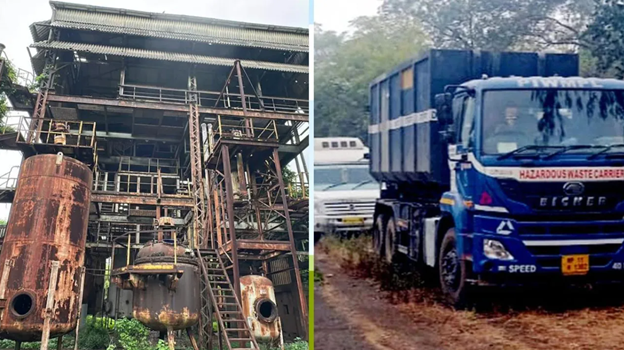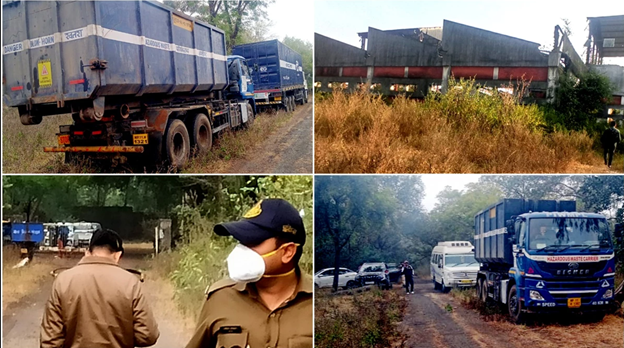Authorities in India have begun the long-overdue removal of hundreds of tonnes of toxic waste from the site of the 1984 Bhopal gas tragedy, one of the world’s deadliest industrial disasters.
On Wednesday, approximately 337 tonnes of hazardous material were transported from the abandoned Union Carbide plant in Bhopal to an incineration facility 230 kilometers away, according to the reports of Leaders team. The operation follows a Madhya Pradesh state High Court order mandating the waste’s disposal within four weeks, citing decades of official inaction.
The toxic waste, which includes pesticide residue and persistent “forever chemicals,” has been polluting groundwater in the surrounding areas for nearly 40 years, posing a persistent health hazard to local residents. A 2018 study by the Indian Institute of Toxicology Research revealed extensive contamination across 42 nearby residential areas.

The waste removal process involved packing the material into leak-proof bags and transporting it in 12 sealed trucks under tight security, accompanied by police escorts, ambulances, and fire engines. Officials stated that the waste will be incinerated at a facility in Pithampur, with measures in place to prevent air and water pollution from the incineration byproducts.
However, the operation has faced significant opposition. Activists and residents near the disposal site have raised concerns about potential environmental and health impacts, citing past incidents of soil and water contamination during trial waste burns in 2015.
As per the sources of Leaders team, Rachna Dhingra, from the International Campaign for Justice in Bhopal, criticized the move, warning that it could lead to a “slow-motion Bhopal” in the new location. She also emphasized that the removed waste represents only a fraction of the total contamination still affecting Bhopal, including over a million tonnes of toxic soil and waste that continue to poison groundwater.
The 1984 gas leak from the Union Carbide factory killed thousands within days and caused long-term health issues for many more. While the Indian government estimates 15,000 deaths over the years, activists believe the toll is significantly higher. Survivors continue to suffer from chronic illnesses caused by the disaster.
Attempts to dispose of the toxic waste have repeatedly stalled over the years due to protests and resistance from activists. Past plans to incinerate the waste in Gujarat, Hyderabad, and Maharashtra were abandoned following public opposition.
Union Carbide paid $470 million in a 1989 settlement with the Indian government, but many victims and campaigners argue that the compensation and subsequent legal outcomes have been grossly inadequate. The disaster remains a stark reminder of the long-lasting consequences of industrial negligence.









